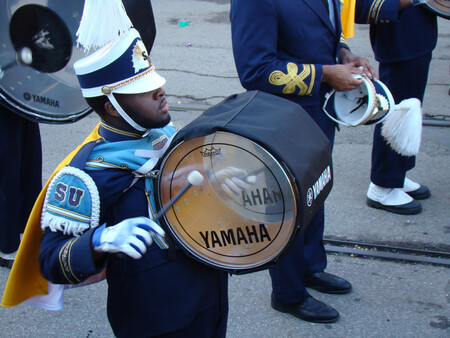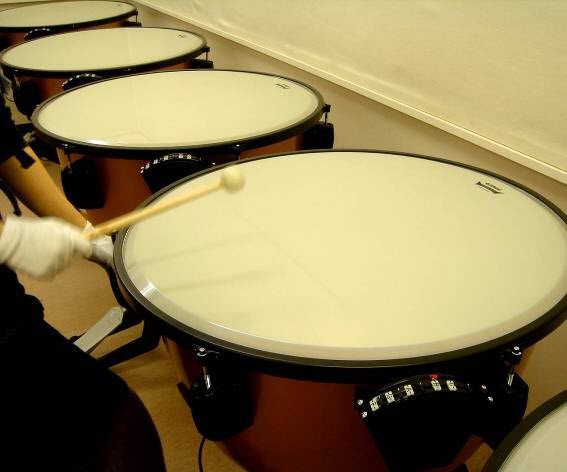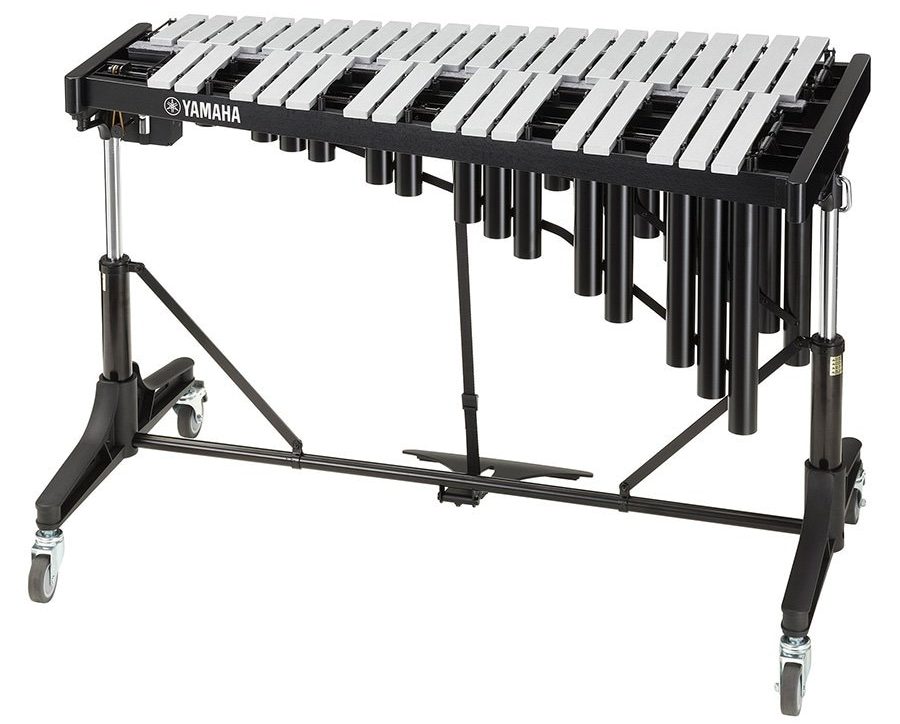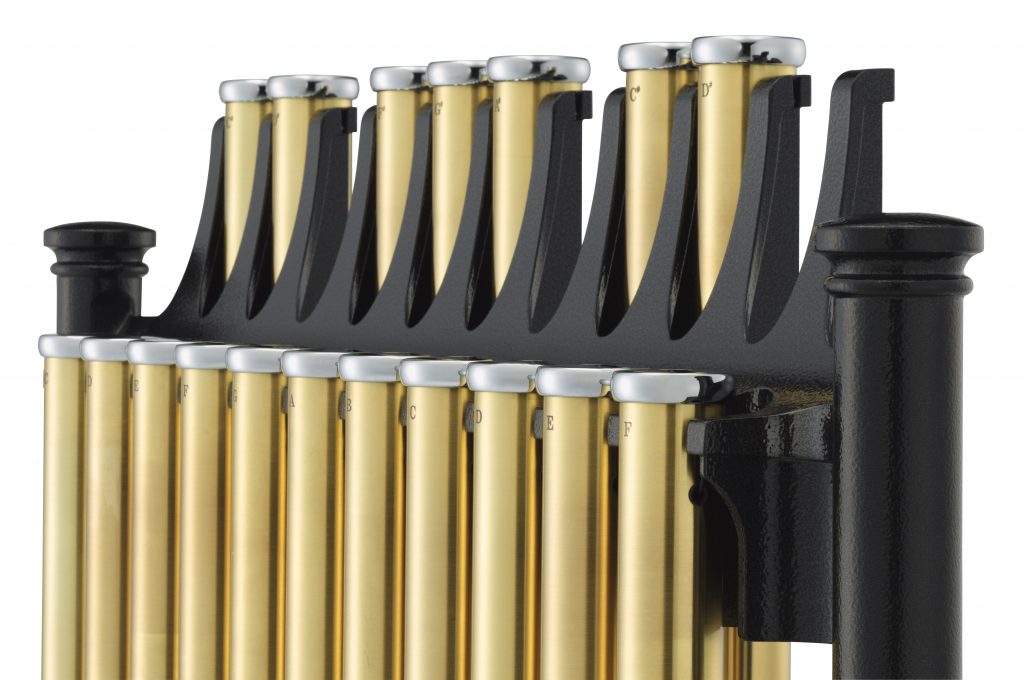Anatomy of a Marimba
What are the components that go into a marimba?
The marimba is a percussion instrument consisting of a set of wooden bars struck with yarn-covered mallets to produce musical tones. Metal resonators (sometimes called resonator tubes or resonator pipes) are suspended beneath the tone bars to amplify their sound, with the length of each resonator varying depending on the pitch of the bar; the lower the note, the longer the resonator. The bars of a marimba are arranged like the keys of a piano, with the groups of two and three accidentals raised vertically, overlapping the natural bars to aid the performer both visually and physically.
In addition to solo performances, marimbas are used in woodwind and brass ensembles, jazz ensembles, marching band (front ensembles), drum and bugle corps, and indoor percussion ensembles. They are also sometimes used in orchestras.
Here’s an annotated illustration of a typical marimba, followed by a description of the main components in alphabetical order:

Frame. A durable frame provides lower support while horizontal legs maintain stability, and therefore the playability of the instrument.
Gas Spring. A height adjustment feature that allows for the most comfortable playing position for different players.
Resonators. The length of these metallic tubes is specific to each note, optimizing the projection of each tone bar.
Rail. These wooden crossbars support the tone bars. Never push or pull a marimba by the rails!
Reinforcement Stay. This provides structural rigidity that prevents the frame from sagging in the middle.
Slant Shaft. Provides additional structural integrity to protect the marimba from sagging over time.
Tone Bars (Natural / Accidental). The bass notes are on the far left-hand side where the thickest bars on the marimba are located. As you move to the right, the bars become smaller and smaller, and the pitch becomes higher.
Also check out our blog article “What’s the Difference Between Marimba and Xylophone?”
Click here for more information about Yamaha marimbas.















